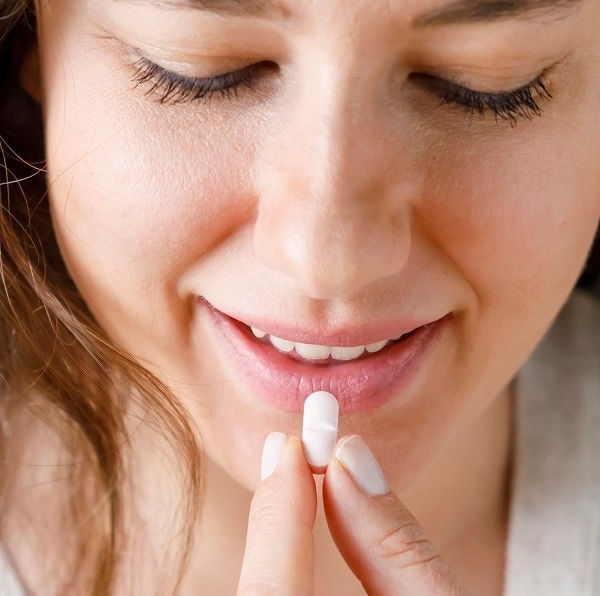News
December 6, 2024
Synthetic vs natural CBD ingredients: The differences and why they matter
Explore five differences between synthetic and natural CBD APIs to inform your next research and development project.

Summary
- Synthetic vs natural cannabidiol (CBD) active pharmaceutical ingredients (APIs) - does it really matter when it comes to drug research and development?
- As innovation accelerates and expands within the dynamic field of CBD-based pharmaceuticals, it’s become even more important to clarify the differences between naturally-derived and synthetic options.
- In this blog, we explore the key differences between synthetically produced and naturally derived CBD APIs and what they mean for drug development.
Tetrahydrocannabinol (THC) and cannabidiol (CBD) are two of the most studied cannabinoids, out of over 100 naturally occurring cannabinoids in the cannabis plant.1,2 CBD, in particular, shows great therapeutic potential due to its non-intoxicating profile and applicability across a variety of diseases. The molecule can be extracted from Cannabis sativa or synthetically produced - meaning innovators interested in exploring the molecule face a pivotal choice: synthetic or natural CBD?
To support drug developers and researchers navigate this decision, we break down five fundamental differences between synthetic and natural CBD APIs. Read on to inform your next CBD innovation project.
1. Molecule structure
Nature’s process of making CBD compounds is very precise. This means that plant-derived CBD API molecules have the correct structure and stereochemistry, which is important for it to bind to the body’s receptors and allowing it to deliver the intended therapeutic effects. On the other hand, synthetic CBD is produced via a series of chemical reactions, whereby this process can produce more than one isomer of cannabidiol. Isomers are molecules with the same formula, but distinct structural arrangement, leading to potentially different properties. Therefore, further processing is required to attain the right CBD isomer - (-)-TRANS-CBD - in synthetic CBD. Regulatory requirements in some countries ask for laboratory test results that confirm the right additional processing has been applied.
2. Purity levels
Just like any other API, the purity of CBD ingredients for pharma use is an important consideration, because impurities can interfere with the desired effectiveness, quality, and safety of a drug. Natural CBD can be produced in different ways, resulting in either a highly pure molecule (CBD isolate) or a broad-spectrum extract. The difference is that CBD isolate is achieved by refining the natural extract to remove all other compounds, like THC, equaling a final product that contains >99% CBD. Whereas, broad-spectrum CBD has been through a less intensive purification process and retains other beneficial compounds, like minor cannabinoids.
In contrast, synthetic CBD is produced through a series of controlled chemical reactions, yielding a highly pure form of CBD. However, unwanted byproducts, like THC-related impurities, can form inadvertently during this process. If this happens, an additional (often costly) purification step is needed to ensure compliance with safety and regulatory standards. Over time, such impurities may increase, especially as the medicine is nearing the end of its shelf-life.
Current pharmaceutical approaches favor single molecule purity for reliable dosing and safety. dsm-firmenich’s naturally-derived CBD API is one of the highest purity botanical isolate on the market, exhibiting a D9-THC level of 0.000006% (essentially undetectable for most labs under the commonly used methods of detection), with no known impurity above 0.15% or unknown impurity above 0.10%. Moreover, more than 400 commercial batches of our CBD API isolate have been produced, demonstrating that the manufacturing process can consistently and reliably deliver the required quality.
3. Pharmacological effects
Clinical studies directly comparing natural vs synthetic CBD are lacking. However, research exploring synthetic CBD for drug-resistant epilepsy3,4 has revealed it shares many characteristics with natural CBD5,6,7,8. This suggests that synthetic CBD could be just as effective as natural CBD in treating conditions like epilepsy, and potentially other conditions.
Another investigation in human cell models of disease has suggested that the pharmacological effects of purified natural and synthetic CBD - namely anticancer, neuroprotective, and intestinal barrier protective properties - are nearly identical.9 Although more clinical evidence is needed to understand the pharmacokinetic profiles of both natural and synthetic CBD API, this indicates that the effects of CBD are similar, regardless of the molecule origin.
Even so, more rigorous basic and clinical research is needed to explore the therapeutic indications of CBD, regardless of its origin. A recent review advised that future studies must address gaps in safety, efficacy, and long-term outcomes, particularly in vulnerable populations like children, pregnant women, and older adults.10
4. Safety profile
Synthetic cannabinoids mimic the effects of natural cannabis molecules. However, they could potentially pose higher toxicity risks than plant-origin compounds. One review concluded that chronic use of synthetic compounds may be linked to more severe and enduring health effects than cannabis or other psychoactive substances.11 These include respiratory difficulties, hypertension, chest pain, muscle twitches, acute renal failure, anxiety, agitation, psychosis, and cognitive impairment.
Natural cannabinoids bring risks too, like contamination from pesticides, metals, or microbes during cultivation, manufacturing, and packaging. This makes natural CBD a potential concern for vulnerable populations, like children or immunocompromised patients, and is something researchers and developers must be mindful of. That said, our CBD API addresses these concerns with comprehensive documentation verifying it is free from pesticides and other contaminants.
5. Regulatory preferences
Regulators in key markets like Mexico, Brazil and Australia only permit natural-derived cannabinoids. Furthermore, the European pharmacopeia monograph for CBD, compliance to which is mandatory for medicinal products marketed in the EU, allows only CBD derived from natural sources, and not synthetic. Additionally, the only registered CBD-containing drugs to date (Epidiolex® and Sativex®) feature CBD isolates from natural sources. On the contrary, synthetic cannabinoids have limited use in approved medicines, namely nabilone and dronabinol, which mimic THC. This makes naturally-derived CBD compounds a preferred option for drug research and development - and ultimately, commercial success.
However, it is not just regulators that show a preference for naturally-derived CBD. A recent study in Germany found that 73% of 153 epileptic patients favored natural CBD.12 This preference was driven by the belief that CBD from botanical origin is less toxic and free from the chemical processes used to manufacture synthetic forms. Yet, it is also important to note that patients often have high expectations of CBD and cannabis-based products due to the perception that ‘natural is safe’. To balance this, healthcare professionals and drug developers must take responsibility for educating patients on evidence-based use of CBD.
The key takeaways
Choosing between synthetic and natural CBD APIs is more than a preference—it’s a critical decision that can shape your research outcomes, drug development strategies, and commercial success. This choice is becoming more important as global demand for cannabis-based solutions rises, alongside growing calls for more robust research to expand therapeutic indications of CBD and ensure compliance with regulatory guidelines.
Natural CBD ingredients already benefit from extensive clinical research and safety data, offering a more established and reliable choice for drug development. Our CBD offering harnesses the benefits of science-backed, natural-origin CBD ingredients—powered by our end-to-end expert services. Together, we can unlock the therapeutic potential of CBD to expand treatment options and convenience for patients globally.
Discover more
To learn more about due diligence considerations across the drug development journey, download our whitepaper.
References
1. Mahmoud, A ElSohly et al., "Phytochemistry of Cannabis sativa L." Progress in Chemistry of Organic Natural Products 103 (2017): 1-36.
2. Mahmoud, A Elsohly & Desmond, Slade. "Chemical Constituents of Marijuana: The Complex Mixture of Natural Cannabinoids." Life Sciences 78, no. 5 (2005): 539-548.
3. Kerstin, A Klotz et al., "Efficacy and Tolerance of Synthetic Cannabidiol for Treatment of Drug-Resistant Epilepsy." Frontiers in Neurology 10 (2019): 1313.
4. James, W Wheless et al., "Pharmacokinetics and Tolerability of Multiple Doses of Pharmaceutical-Grade Synthetic Cannabidiol in Pediatric Patients with Treatment-Resistant Epilepsy." CNS Drugs 33, no. 6 (2019): 593-604.
5. Orrin, Devinsky et al., "Effect of Cannabidiol on Drop Seizures in Lennox-Gastaut Syndrome." New England Journal of Medicine 378, no. 20 (2018): 1888-1897.
6. Elizabeth, A Thiele et al., "Cannabidiol in Patients with Seizures Associated with Lennox-Gastaut Syndrome (GWPCARE4): A Randomised, Double-Blind, Placebo-Controlled Phase 3 Trial." Lancet 391, no. 10125 (2018): 1085-1096.
7. Orrin, Devinsky et al., "Randomized, Dose-Ranging Safety Trial of Cannabidiol in Dravet Syndrome." Neurology 90, no. 14 (2018): e1204-e1211.
8. Jerzy, P Szaflarski et al. "Long-Term Safety and Treatment Effects of Cannabidiol in Children and Adults with Treatment-Resistant Epilepsies: Expanded Access Program Results." Epilepsia 59, no. 8 (2018): 1540-1548.
9. Ryan, F Maguire et al., "The Pharmacological Effects of Plant-Derived Versus Synthetic Cannabidiol in Human Cell Lines." Medical Cannabis and Cannabinoids 4, no. 2 (2021): 86-96.
10. Simei, Joao Luis Q et al., “Research and Clinical Practice Involving the Use of Cannabis Products, with Emphasis on Cannabidiol: A Narrative Review.” Pharmaceuticals 17 (2024): 1644.
11. Koby, Cohen & Aviv, M Weinstein. "Synthetic and Non-Synthetic Cannabinoid Drugs and Their Adverse Effects—A Review from Public Health Perspective." Frontiers in Public Health 6 (2018): 162.
12. Randi, von Wrede et al., "Plant Derived Versus Synthetic Cannabidiol: Wishes and Commitment of Epilepsy Patients." Seizure 80 (2020): 92-95.
Related Content
Quick links
Customized blends of functional ingredients in one single, efficient premix.
Streamline your product development process and get to market faster.
From trade shows to conferences and other industry events, find out where you can meet us next.
Talking Nutrition, Health & Care
Explore new science, consumer insights, industry news and more in our latest articles.
Discover educational whitepapers, webinars, publications and technical information.
Request samples, place orders and view product documentation.


